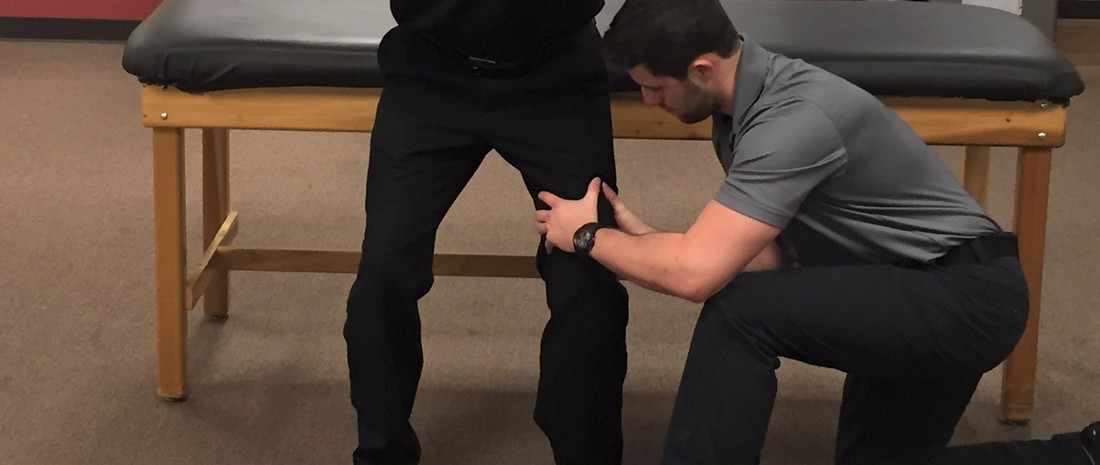- Home
- About Us
- TSPT Academy
- Online Courses
-
Resources
- Newsletter
- Business Minded Sports Physio Podcast
- Day in the Life of a Sports PT
- Residency Corner
-
Special Tests
>
-
Cervical Spine
>
- Alar Ligament Test
- Bakody's Sign
- Cervical Distraction Test
- Cervical Rotation Lateral Flexion Test
- Craniocervical Flexion Test (CCFT)
- Deep Neck Flexor Endurance Test
- Posterior-Anterior Segmental Mobility
- Segmental Mobility
- Sharp-Purser Test
- Spurling's Maneuver
- Transverse Ligament Test
- ULNT - Median
- ULNT - Radial
- ULNT - Ulnar
- Vertebral Artery Test
- Thoracic Spine >
-
Lumbar Spine/Sacroiliac Joint
>
- Active Sit-Up Test
- Alternate Gillet Test
- Crossed Straight Leg Raise Test
- Extensor Endurance Test
- FABER Test
- Fortin's Sign
- Gaenslen Test
- Gillet Test
- Gower's Sign
- Lumbar Quadrant Test
- POSH Test
- Posteroanterior Mobility
- Prone Knee Bend Test
- Prone Instability Test
- Resisted Abduction Test
- Sacral Clearing Test
- Seated Forward Flexion Test
- SIJ Compression/Distraction Test
- Slump Test
- Sphinx Test
- Spine Rotators & Multifidus Test
- Squish Test
- Standing Forward Flexion Test
- Straight Leg Raise Test
- Supine to Long Sit Test
-
Shoulder
>
- Active Compression Test
- Anterior Apprehension
- Biceps Load Test II
- Drop Arm Sign
- External Rotation Lag Sign
- Hawkins-Kennedy Impingement Sign
- Horizontal Adduction Test
- Internal Rotation Lag Sign
- Jobe Test
- Ludington's Test
- Neer Test
- Painful Arc Sign
- Pronated Load Test
- Resisted Supination External Rotation Test
- Speed's Test
- Posterior Apprehension
- Sulcus Sign
- Thoracic Outlet Tests >
- Yergason's Test
- Elbow >
- Wrist/Hand >
- Hip >
- Knee >
- Foot/Ankle >
-
Cervical Spine
>
- I want Financial Freedom
- I want Professional Growth
- I want Clinical Mastery
|
This past weekend at the Optim COMT course, we were discussing squats as a form of treatment. While the squat is an excellent exercise for a variety of ailments, it is an exercise that is prone to many compensations. Combine that with pain in the knees or elsewhere, and form may be compromised even more. There are several reasons why the pain may impact the ability to squat, but tissue tension may play a role. One of the common variations that is seen during squats is the "buttwink," otherwise known as posterior pelvic tilt and lumbar flexion. Typically we see this occur as the client nears their bottom depth of the squat. There are many possibilities as to why this may occur: lack of hip flexion, poor motor control, decreased spinal mobility/strength and more. Another possible explanation for lumbar flexion is poor quadriceps strength. As an individual with poor quad strength descends into a squat, they typically either stop early in the depth or display a compensation like lumbar flexion and forward trunk lean. To try and control the movement that the quads are insufficient to support, the body tries to rely on the passive tissue tension of the posterior chain and a shift in center of gravity anteriorly. As the "buttwink" occurs and the trunk shifts forward, the muscles, tendons, and ligaments become taut and provide a form of passive support to control the body during the motion. Over time, this may lead to injury. So how do we fix this? There are many avenues to address this client, but strengthening the lower quarter should absolutely be considered. There are many ways to strengthen the quadriceps, and it may be tempting to avoid squats due to the client's poor form; however, the exercise can be modified to the appropriate level. Using an assistive device like a TRX or leg press can simulate the motion at less than body weight to allow proper form. There are some cases where adding a load to the individual actually improves form! Regardless, improving an individuals functional squat may be as simple as improving their strength. -Dr. Chris Fox, PT, DPT, OCS
2 Comments
Tissue tension during squats plays a crucial role in maximizing muscle activation and promoting strength gains. As you lower into the squat position, the muscles surrounding your hips, knees, and ankles experience increased tension, stimulating their growth and adaptation. Maintaining proper form and technique is key to optimize tissue tension. Engaging the core, keeping the chest up, and pushing through the heels help distribute the load evenly and target the desired muscle groups. To learn more about the importance of tissue tension during squats and how to execute them effectively, click here.
Reply
12/12/2023 03:35:44 pm
2020 Birmingham is an inspiring church planting movement that began in 2010, uniting FIEC, Newfrontiers, BCM, and the Anglican Church. Their collaborative approach acknowledges the city's needs and opportunities, emphasizing the importance of working together to address gaps. With a vision to plant 20 churches by 2020, they've made significant strides, partnering with new church plants and impacting society by creating churches that go beyond rearranging Christians to actively changing the city.
Reply
Leave a Reply. |
Dr. Brian Schwabe's NEW Book in partner with PaleoHacks!
Learn residency-level content on our
Insider Access pages We value quality PT education & CEU's. Click the MedBridge logo below for TSPT savings!Archives
July 2019
Categories
All
|









 RSS Feed
RSS Feed